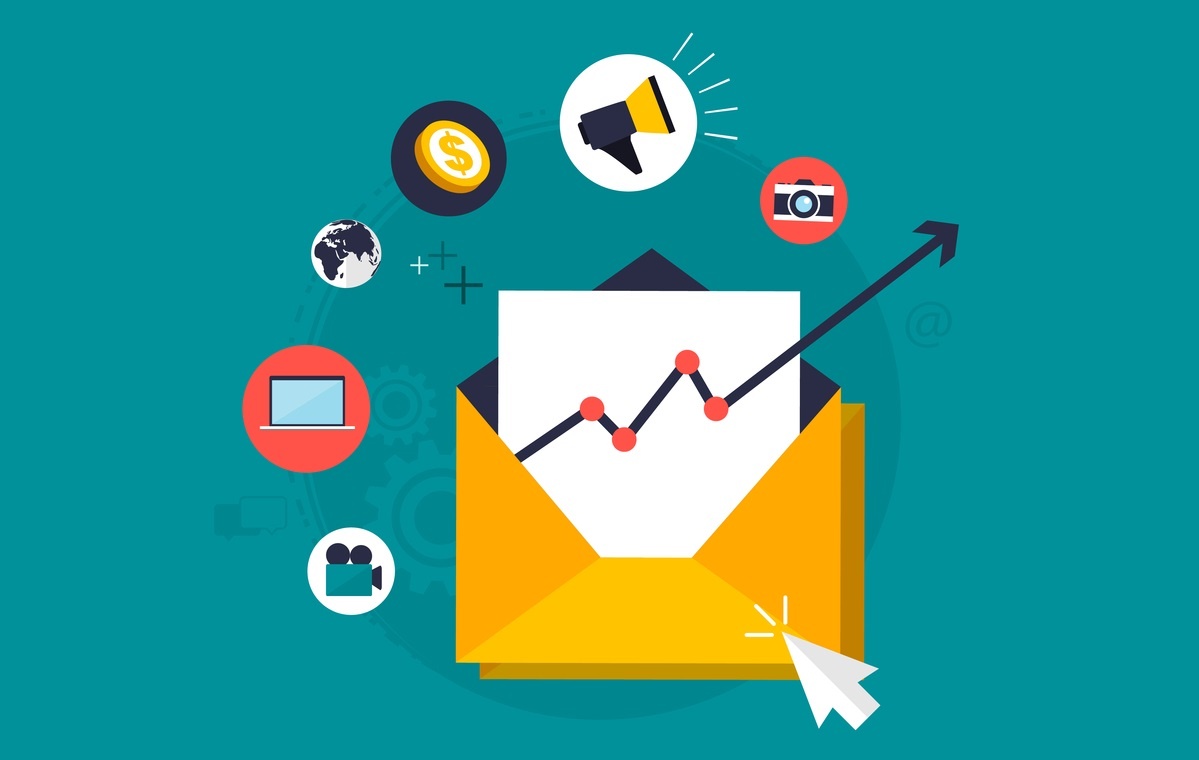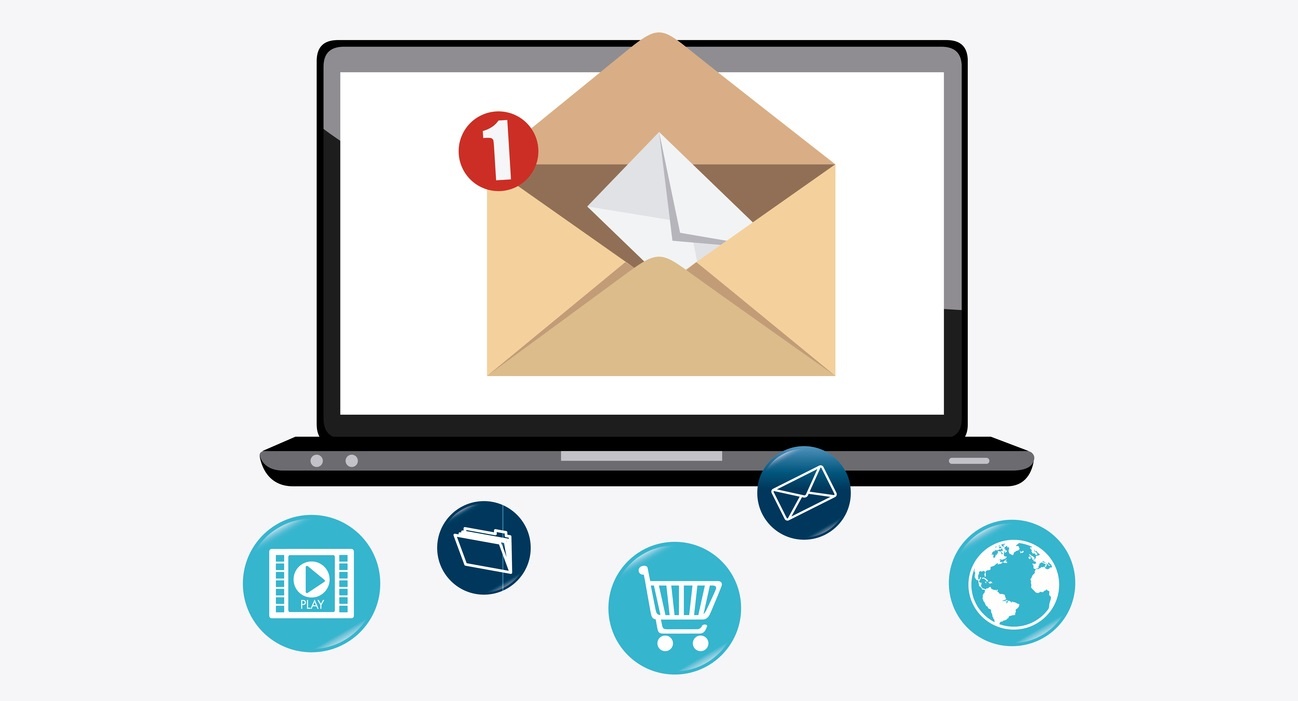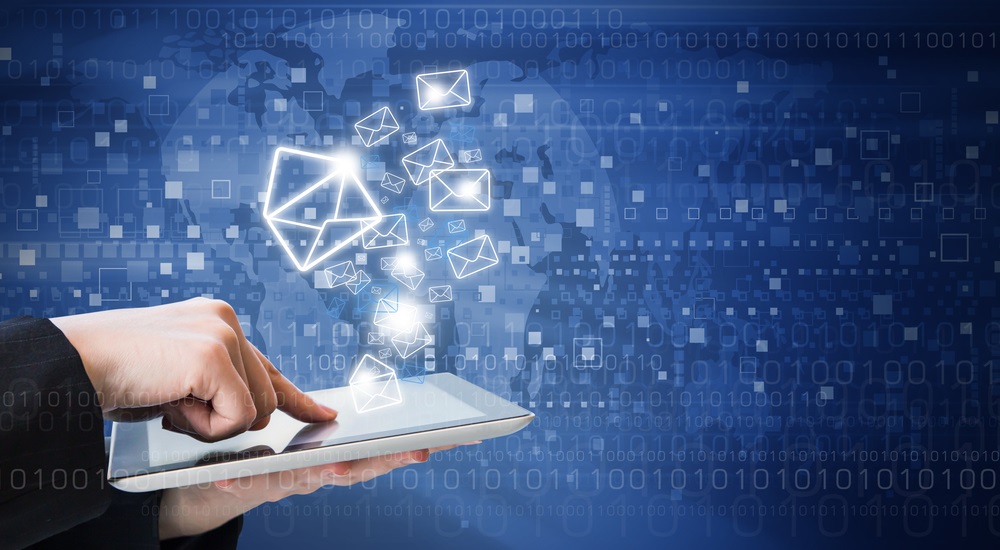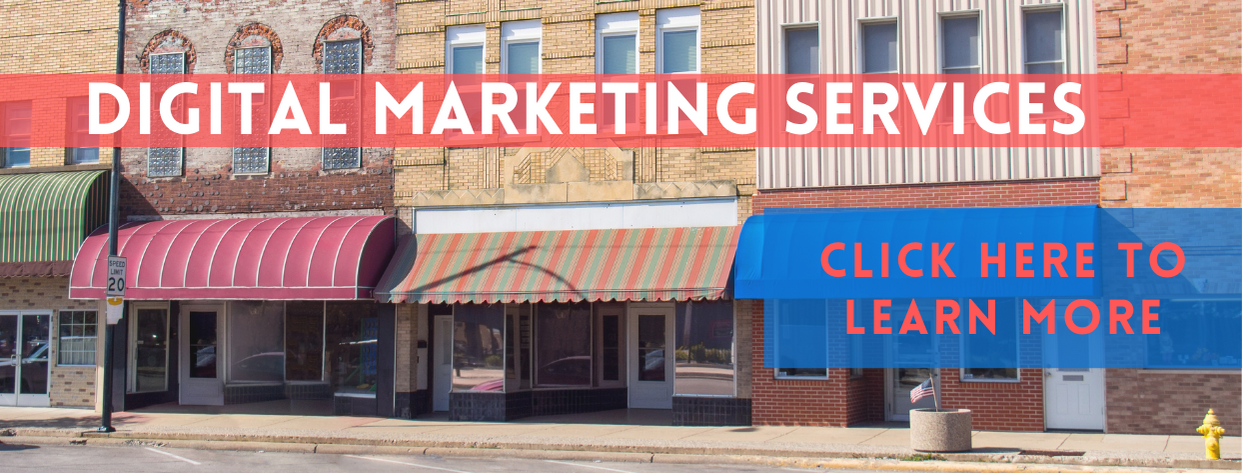5 Email Types You Can Use With Inbound Marketing
By Jaco Grobbelaar on Thu, Oct 24, 2024 @ 05:00 AM

%20(2).jpg?width=1000&height=550&name=Untitled%20(1000%20x%20550%20px)%20(2).jpg)
[This article was last published in April 2024 and has been updated, enlarged, and revised.]
Having a great email marketing campaign is essential for successful inbound marketing. But you are not limited to only one type of email.
In the world of email marketing, there’s a vast array of email types designed for different purposes, from driving sales to nurturing relationships.
Marketing emails alone span numerous formats, each with unique functions that make a powerful impact when used strategically.
While some sources claim there are over a dozen types of marketing emails, it really comes down to selecting the ones that best fit your goals and audience. Knowing which types are essential can help streamline your strategy and boost engagement.
Five Essential Types of Emails You’ll Want to Use:
- Lead Nurturing Emails: Designed to build relationships and guide potential customers along the buyer’s journey.
- Welcome Emails: First impressions matter, and these help set the tone for new subscribers.
- New Content Emails: Highlight fresh resources, like blog posts or industry reports, to drive traffic.
- Newsletter Emails: Keep subscribers engaged with updates, curated content, and company news.
- Event Invitation Emails: Generate excitement and secure attendance for upcoming webinars or live events.
While some emails, like transactional or thank-you emails, serve as quick touchpoints, the types above focus on relationship-building and encouraging action. Let’s explore how each of these can work for your brand and why they’re essential for an effective email marketing strategy.
Harnessing the Power of Email Types for Inbound Marketing
Email marketing remains one of the most effective ways to nurture leads and convert them into loyal customers. As the folks at Beehiiv have pointed out,
"2025 is here, and email marketing has taken over the marketing landscape. It is only going to go up from here. There have been newer technologies, channels, and strategies, giving marketers more options than ever to engage their audience and drive business results; yet, amidst all this change, one marketing tactic remains as relevant and effective as ever: emails!"
In this guide, we’ll cover five critical email types, along with best practices, metrics to track, and real-world examples to help you optimize each email for maximum impact. Whether you’re welcoming a new subscriber or sending a lead-nurturing sequence, these insights will help you create a more strategic and engaging email marketing experience.
These are certainly not the only types of emails you may want to send to your subscribers, customers or prospects. However, these five constitute a good mix of email types that will allow you to engage in a number of email marketing tactics.
1. Lead Nurturing Emails
Lead nurturing emails are specifically crafted to build relationships with potential customers who have shown initial interest, perhaps by signing up for your newsletter, downloading a white paper, or registering for a webinar. By segmenting your leads based on their unique interests, behaviors, and pain points, you can develop targeted email sequences that offer real value, address specific challenges, and subtly demonstrate your brand’s expertise.
Each email in the sequence should be designed to educate and engage. Consider offering a mix of helpful articles, industry insights, case studies, and testimonials that demonstrate how your solutions address relevant pain points. Personalization is key; the more you can tailor content to each lead’s stage in the buyer’s journey, the stronger the connection you build.
Incorporate strategic calls-to-action (CTAs) that guide leads toward valuable resources, like product demos, consultations, or free trials. Instead of pushing a hard sale, the goal of lead nurturing emails is to establish your brand as a trusted advisor who genuinely understands and can solve their problems. Over time, this approach cultivates trust and fosters loyalty, making it more likely for leads to convert into long-term customers when they’re ready.
Tips for Success:
- Segment Leads by Interest: By categorizing leads based on their behavior, interests, and needs, you can send more personalized content that resonates.
- Use Valuable Content: Share informative articles, case studies, or relevant insights to address pain points and showcase your expertise.
- Incorporate Strategic CTAs: Encourage the next step, like booking a demo or downloading another resource, to keep leads engaged in your funnel.
Metrics to Track: Conversion rates, click-through rates (CTR), and time spent on linked landing pages. These metrics indicate how effectively you’re moving leads through the customer journey.
Common Pitfalls: Avoid overwhelming leads with too much information too soon. Each email should focus on a single topic or solution, making it easy for leads to take action.
Example: A software company saw an increase in conversion rates by delivering lead-nurturing emails that focused on specific pain points, like data security or productivity. The emails provided case studies and a CTA to schedule a personalized demo, driving leads closer to a purchase decision.
2. Welcome Emails
Welcome emails offer a critical opportunity to make a positive first impression on new subscribers. Rather than a simple “thank you,” these emails should express sincere appreciation for their interest and outline the benefits of being part of your email community. Set expectations upfront by explaining what kind of content they’ll receive—whether it’s exclusive articles, early access to promotions, or insightful industry tips.
Use the welcome email to introduce your brand’s mission, values, and unique approach, giving subscribers insight into what makes your company special. This initial email is also an ideal place to showcase your brand’s personality. Write in a friendly, approachable tone and personalize the message by including the subscriber’s name. This small touch goes a long way in making them feel like part of your community.
To keep the connection strong, include links to your social media channels, blog subscriptions, and popular content on your website. A thoughtfully crafted welcome email lays the foundation for ongoing engagement, encouraging subscribers to stay connected and explore what your brand has to offer.
Tips for Success:
- Go Beyond “Thanks”: Greet new subscribers with a warm welcome, highlighting the unique benefits of joining your email list.
- Highlight Your Values and Content: Share a bit about your brand's mission and what type of content subscribers can expect such as exclusive deals or industry insights.
- Showcase Your Personality: Use a friendly and approachable tone and personalize the email with the subscriber’s name to make it more engaging.
Metrics to Track: Open rates, click-through rates, and engagement over time to measure how effectively you’re retaining new subscribers.
Common Pitfalls: Don’t make promises you can’t keep; be clear about your content cadence and maintain a consistent tone in follow-up emails to avoid disappointing new subscribers.
Example: A retail brand created a welcome email that not only thanked new subscribers but also introduced them to the brand’s core values and linked to social media. The email included a discount for their first purchase, which boosted engagement and established brand loyalty.
3. New Content Emails
New content emails are incredibly versatile and effective for driving traffic to your site and keeping your audience engaged with your latest offerings. While these emails can be used to announce product launches, discounts, or free trials, it’s best to focus on providing valuable content that will appeal to your audience’s interests. Think beyond simple announcements—share thought-provoking blog posts, in-depth industry reports, captivating video series, or invite subscribers to join an upcoming webinar.
Craft a compelling subject line and lead-in text to grab attention right away. Use clear, action-oriented CTAs like “Read Now,” “Watch Today,” or “Register for Free” that encourage readers to take the next step. Adding visually appealing CTA buttons can increase click-through rates even further, making it easier for readers to access your content quickly.
Regularly sending out new content emails keeps your audience informed and positions your brand as an ongoing resource. Over time, they’ll come to rely on your updates, establishing you as a go-to source of information within your industry.
Tips for Success:
- Focus on Value: While these emails can promote new products, prioritize educational or entertaining content that will resonate with your audience.
- Use Compelling CTAs: Draw attention to your call to action with strong, action-oriented verbs like “Download Now” or “Watch Today.” Visually appealing buttons can also increase clicks.
- Incorporate Visuals: Make the email visually engaging with images or graphics that tie into the content topic.
Metrics to Track: Click-through rates, conversion rates, and time spent on linked content pages. These indicators show how much value subscribers find in your content.
Common Pitfalls: Avoid using too many CTAs in a single email; stick to one primary action to keep the email focused and effective.
Example: A tech blog promoted a new video series with clear, prominent CTAs and saw a significant increase in viewership by giving subscribers a sneak peek into the series and inviting them to “Watch Now” for the full experience.
%20(1).jpg?width=1000&height=550&name=Untitled%20(1000%20x%20550%20px)%20(1).jpg)
4. Newsletter Emails
Newsletters are a staple in content marketing, but in today’s crowded inboxes, it takes creativity and planning to make them stand out. Rather than focusing solely on promoting recent blog posts, consider curating a blend of valuable content that offers variety—such as industry news, curated articles, case studies, and customer success stories.
Keep the format visually appealing and scannable. Use concise headlines, short paragraphs, bullet points, and eye-catching visuals to help busy subscribers find content that interests them quickly. A well-structured newsletter respects readers' time and is more likely to be read rather than ignored. For each piece of content, incorporate strong CTAs that prompt readers to engage further, whether it’s reading a full article, downloading a resource, or exploring additional offerings.
Newsletters provide an excellent opportunity to reinforce brand loyalty by delivering consistent value. By showing readers that you understand their interests and providing relevant insights, you strengthen your brand’s reputation and foster a community of engaged subscribers.
Tips for Success:
- Variety is Key: Include a mix of content, from recent blog posts and industry news to customer success stories, to keep your newsletter interesting.
- Use a Scannable Format: Bullet points, headings, and short paragraphs make newsletters easy to skim, making readers more likely to click on the links that interest them.
- Strong CTAs for Each Section: Ensure that each piece of content in the newsletter has a clear CTA that directs readers to more detailed information.
Metrics to Track: Open rates, click-through rates, and engagement on linked content. These metrics help you understand what types of content your audience prefers.
Common Pitfalls: Avoid overly lengthy newsletters. Focus on a few key points and make each section concise and visually engaging to maintain readers’ attention.
Example: A marketing agency saw increased engagement by creating a newsletter that featured the top three articles for the month, including client success stories and industry trends. Each section had a clickable headline that linked to the full article, making it easy for readers to explore further.
5. Invitation Emails
Event invitation emails are designed to generate excitement and encourage attendance for upcoming events such as webinars, conferences, or live workshops.
The power of an in-person event cannot be underestimated. As we see from a post at Bizzabo,
"According to Bizzabo’s studies, more than 80% of top brands all around the world believe in-person events are critical for growth and success. Last year, they spent just a little bit under a billion dollars on gatherings. This year they show an intention to grow even more. Indeed, event marketing is an excellent opportunity to raise credits for your company, generate qualified leads, and ensure revenue."
Treat these emails as virtual invitations, packing them with essential details like the date, time, and location (if applicable), along with a brief agenda, speaker bios, and the topics that will be covered.
Event invitations are a great place to use bold visuals and images that capture the theme and excitement of the event, such as graphics featuring keynote speakers, past event highlights, or sneak peeks at exclusive content. Use vibrant colors and attention-grabbing headlines to draw the reader’s eye. For instance, instead of saying, “Join Us for a Webinar,” try “Unlock Exclusive Industry Insights—Register Today!” This piques curiosity and encourages action.
Since the primary goal is immediate engagement, ensure the registration CTA is prominent and straightforward, allowing recipients to RSVP or register with a single click. Event invitation emails allow you to gather a committed audience for your event, increasing brand awareness and offering a direct way to interact with leads and clients in a meaningful way.
Tips for Success:
- Cover Key Details: Provide essential information, like date, time, location (if applicable), and a clear agenda for the event.
- Use Visuals to Build Excitement: High-quality images, speaker photos, and relevant graphics can make the invitation more engaging.
- Easy Registration: Include a clear RSVP or registration CTA, ideally as a button, to streamline the sign-up process.
Metrics to Track: Registration rates, attendance rates, and engagement during the event. These metrics can help you optimize future event invitations.
Common Pitfalls: Avoid overly complex registration processes. Instead, make signing up as easy as possible by embedding a registration link directly in the email.
Example: A software company promoted an upcoming product webinar by including speaker profiles, an event agenda, and a CTA to register. This approach led to a significant increase in registrations and engagement, as subscribers could clearly see the value of attending the event.
%20(1).jpg?width=1000&height=550&name=Copy%20of%20Copy%20of%20Copy%20of%20Copy%20of%20Black%20and%20White%20Modern%20Company%20Presentation%20(1000%20x%20550%20px)%20(1).jpg)
Bonus Tips for Success in Email Marketing
Incorporate A/B Testing: Experiment with different subject lines, CTA placement, and content types to see what resonates most with your audience. Testing can give you insights into improving open rates and clicks.
Use Templates and Visuals: Templates streamline your design process and ensure brand consistency. Adding visuals like images, infographics, or videos helps increase engagement and enhances the visual appeal of your emails.
Add a Final Checklist: For each email type, create a short checklist covering elements like segmentation, personalization, CTA clarity, and mobile optimization. This will serve as a final review before hitting “send.”
[Bonus Email Type] Re-Engagement Email
Over time, some subscribers on your email list become inactive. Re-engagement emails aim to win back these once-interested contacts and rekindle their connection with your brand. These campaigns can be triggered by a subscriber's inactivity for a specific period or their lack of interaction with recent emails.
Effective re-engagement emails offer incentives to entice subscribers to re-engage. This could include exclusive discounts, early access to new content, or a freebie relevant to their interests. Personalized subject lines that acknowledge their absence and express that you miss them can also be a powerful tactic.
The goal is to remind subscribers of the value you offer and encourage them to reconnect. Consider including a preference center link within the email, allowing them to tailor the content they receive to their specific interests, increasing the likelihood of future engagement.
Finding Your Perfect Recipe Blend
Now that you have a well-stocked email ingredient pantry, it's time to craft your winning recipe. Consider your campaign goals! Are you aiming to nurture leads, generate brand awareness, or drive sales?
- Lead Nurturing Focus: Prioritize lead nurturing emails with a healthy dose of informative content sprinkled in with strategic CTAs leading towards demos or consultations.
- Brand Awareness Goals: Balance welcome emails and new content emails to introduce your brand and showcase your thought leadership.
- Sales & Conversion Focus: Include a strategic mix of new content emails promoting valuable resources and offers alongside transactional emails like cart abandonment reminders.
Remember, the beauty lies in the mix! Experiment with different email types, track your results through key metrics like open rates and click-through rates, and refine your strategy over time. By understanding your audience's needs and leveraging the right email blend, you'll whip up a winning email marketing recipe that delivers engagement and results.
Email Marketing: Low Cost, High ROI, and Effective
An well though out email campaign is a great tactic for your overall inbound marketing strategy. Along with blogging, short-form video, and other types of content publishing, emails can expand both your reach and impact in a way that most any other medium cannot.
Inbound marketing is powerful approach for building and scaling your business and email marketing can play a significant part of it. But achieving your marketing objectives with an inbound marketing strategy takes time. It won't happen with a few email blasts, blog posts or even a few great email campaigns.
The truth is that your leads and prospects will need to consume your content for a while before they contact you. Yet, without your content compelling them to contact you, your goals may never be met.
The good news is that you don't have to figure out alone. In fact, one of the best investments you can make with your marketing budget is to partner with a solid firm like BroadVision marketing.
Click on the link below so you can make an informed decision, or call BroadVision Marketing at 707-799-1238.
You May Also Like
These Related Stories

5 Tips For Using Email Effectively With Inbound Marketing

Email Marketing 2018: Old School Still Reigns

.png?width=302&height=75&name=BVM%20Logo%20-%20transparent%20(1).png)




No Comments Yet
Let us know what you think